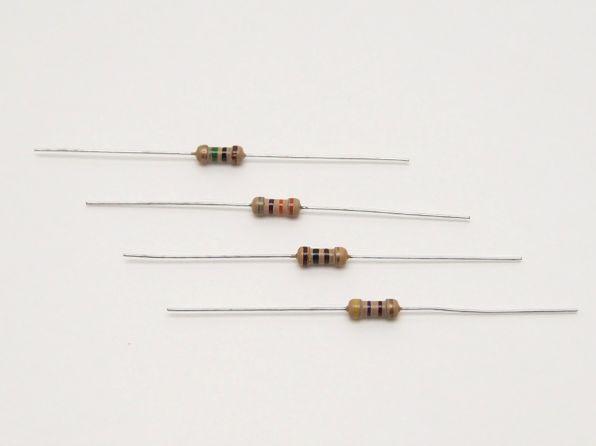No need for PC or settings, budget 2,000 yen ~ start!
Scene of IchigoJam and private programming instruction
The 3rd installment of a project to actually see what a children's programming class looks like. "IchigoJam" is the simplest computer for children that you can buy in a kit for 1,890 yen. If that's the case, there must be some people who think, "I want to do the same thing at home!"
So, this time, I, Amane Honoka, a liberal arts college student, will try to do exactly the same thing as "KidsVenture", a programming class for elementary school students using IchigoJam. The contents are soldering and game programming of IchigoJam introduced in the first installment. I think it will probably be the easiest electronics and programming course in the world!
Challenging electronic work is...
Honoka Amane, a female college student with a liberal arts degree
A typical useless college student who went from elimination to majoring in literature. As a matter of course, I have no experience in electronic work or programming. We reported on the state of the elementary school students at the last time, the time before last, and the "KidsVenture Summer Vacation Special" held on August 24th and 25th. This time, I am very interested in trying soldering and programming, which I have never seen before.
KidsVenture is a non-profit organization jointly operated by Sakura Internet Co., Ltd., Bitstar Co., Ltd., Natural Style Co., Ltd., and jig.jp Co., Ltd. Also, in connection with this article, I went along with an interview with Mr. Kunihiro Tanaka, CEO of Sakura Internet! Please read about the background behind the fact that the actual IT companies are doing KidsVenture and their passion for programming (interview with Kunihiro Tanaka).
Then, how did my first soldering iron and programming experience unfold? "Actually, I made a few mistakes, such as touching hot parts (!), but the computer I built ran the programs I wrote!" "If you have no experience, I recommend you give it a try."
IchigoJam computer used this time and notes
IchigoJam kit
IchigoJam finished product

[IchigoJam] An introductory one-board microcomputer developed by Taisuke Fukuno of jig.jp, one of the members of the KidsVenture management committee. Programs can be input, edited, executed, and debugged without troublesome work such as OS installation. A "kit" that is soldered and built from the board state is 1,890 yen (tax included). A "finished version" is available for 2,160 yen (tax included) that allows you to start programming as soon as you connect the keyboard and NTSC video output to a TV. The latest version is "IchigoJam T". purchase page.
NTSC video output
USB-PS/2 conversion plug
*Notes when using IchigoJam. "NTSC video output" may not be available on modern TVs. However, since it has been adopted in most TVs, please look for it around you. One more keyboard, you need a USB-connected "PS/2 keyboard" or a PS/2 keyboard and a USB-PS/2 conversion plug. For more information, please visit this page (reference link).
[BASIC] An introductory programming language widely used in early personal computers in the 1970s and 1980s. At IchigoJam, we intentionally adopted this with the aim of making it as simple as a toy. One of the attractions of BASIC is that there are many people who have used it before. I will write a program with letters using the keyboard.
Meeting solder for the first time in my life
Earlier in October, I gave a lecture about experiencing IchigoJam at the meeting room of Sakura Internet Co., Ltd. in Nishi-Shinjuku, Tokyo. . The instructors were Mr. Ryota Omura and Mr. Kenta Otake of Sakura Internet, who were also instructors in the KidsVenture Summer Vacation Special. Let's start with the assembly of IchigoJam.
Kenta Ohtake
Ryota Omura
In order to assemble IchigoJam, there is no need to use screwdrivers or screws, just "soldering". Solder was originally an alloy of "lead" and "tin" that was used to connect electronic components by heating and melting. First, check the tools required for soldering.
First of all, solder, which can be said to be the main character of this time. As I explained earlier, solder contains lead, but KidsVenture uses "lead-free solder," which, as the name suggests, does not contain lead. By the way, it wasn't until I was explained on this occasion that I learned that solder was like this kind of wire... (laughs).
The soldering iron is a tool that heats and melts the solder. It seems that holding a pencil is the correct way to hold it. By the way, electronic parts are fixed with solder through the part called "leg" through the hole of the board. At that time, the nippers are used to cut off the unnecessary parts with a snap. Surprisingly, nippers, solder and a soldering iron, you can do electronic work with just this!
Solder
Soldering iron
nippers
Nowadays you can buy it online, but it would be nice to go to an electronic parts store in Akihabara (famous Akizuki Denshi, Sengoku Densho, aitendo, etc.) and look for it yourself.
After confirming the tools, Mr. Omura said, "First, make sure that this soldering iron is at 420 degrees. The tip of the iron is about the same temperature as the grilled meat plate, so don't touch it. Please be careful," IchigoJam's assembly instructions were handed over.
IchigoJam T half kit illustration
There are pictures and explanations for each part. For me, who didn't even know what solder was until now, I was very grateful. By the way, it seems that this print is the same as the one used in the actual KidsVenture seminar. Now, let's proceed with the soldering in the order of the numbers written next to the parts.


